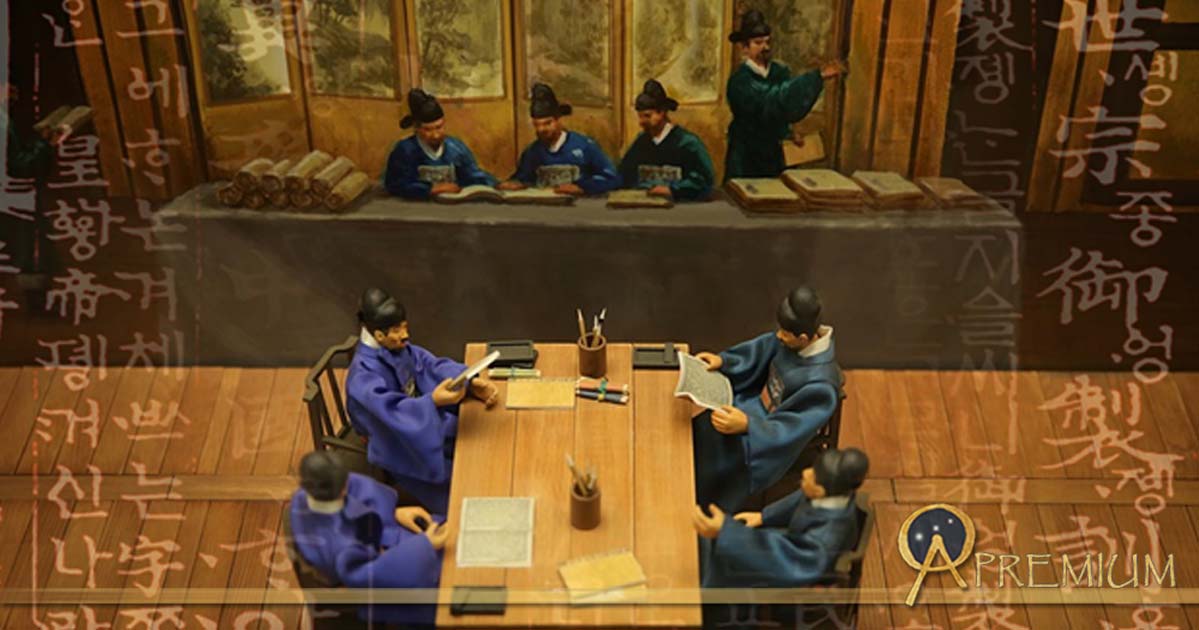What Happens if Scholars Rule a Kingdom? How Korea’s Kingdom of Joseon Lived Up to its Legendary Namesake
By the 14th century, the foundations of Korea’s Goryeo Dynasty (918 -1392 CE) started to collapse from years of war and de facto occupation from the Mongol Empire. The royal court in Goryeo was at its most divided as it split into two conflicting factions led by General Yi Seonggye and General Choe Yeong. In 1392 CE, Yi Seonggye emerged victorious—thus ending the Goryeo Dynasty.
The story did not stop there for Yi Seonggye. The general then changed his name to Taejo as he intended to rule Goryeo by simply changing the royal line of descent to his own. However, after numerous threats of mutiny from the high-ranking families who continued to swear allegiance to the remnants of Goryeo, an important mark needed to be made to signify the change.

Taejo of Joseon (Public Domain)
Therefore, one of the first steps taken by Taejo to legitimize his rule was to declare that the new dynasty was to be known as "Joseon,” leading him to be known as Taejo of Joseon. This name was a deliberate choice as it brought to mind an ancient dynasty of the same name. However, the new king did not just choose any old ancient dynasty, he selected the first and the longest lasting dynasty of Korea, Joseon (c. 2333 BCE - 108 BCE). He would have known very well that the people would naturally associate and compare the two kingdoms.
Later, to distinguish the two kingdoms, the older Joseon came to be called Gojoseon; the addition of Go ("ancient") distinguished it from its later incarnation. By an odd coincidence, Gojoseon and Joseon are historically known as the first and the last kingdoms of Korea respectively.
The Legendary Kingdom of Gojoseon, the Ancient Land of the Morning Calm
The name Joseon derives from the Chinese Chaoxian, which is a combination of the two words chao (“dawn”) and xian (“calm”) - hence the occasional reference to Korea as “Land of the Morning Calm”.
According to the thirteenth century CE Samguk Yusa (“Memories of the Three Kingdoms”), legend has it that Gojoseon was founded in 2333 BCE by Dangun Wanggeom, son of the god Hwanung ("Supreme Divine Regent") and a female bear that transformed into a woman. Dangun Wanggeom’s date of birth, the third day of the tenth month, is celebrated as National Foundation Day in South Korea.

Portrait of Dangun, founder legendary founder of Gojoseon, the first ever Korean kingdom. (Public Domain)
As the foundation of Gojoseon is often said to be mythological and the date is debated to this day, finding records of the peoples’ day-to-day life of the time is quite difficult. An early reference to
Fire Arrows and A New Writing System: The King who Educated His People and the Great Accomplishments of New Joseon
King Taejong of Joseon had been an effective military strategist and leader, and he put his experience as a general in the military to good use as a king. He continued to guide Joseon military planning for the first four years of his great-grandson Sejong's reign.

The wall of Hwaseong Fortress, built from 1794 to 1796 by King Jeongjo of the Joseon Dynasty (Kim Jung Wook/CC BY-SA 4.0)
In his turn, King Sejong introduced a number of organizational and technological improvements to the kingdom's military forces by way of supporting the development of new types of cannons and mortars, as well as rocket-like "fire arrows" which functioned in a similar way to modern rocket-propelled grenades.

Shinkigeon-style Hwacha could fire 100 fire-arrows at a time. (Kang Byeong Kee /CC BY 3.0)
It was this same great-grandson of Taejo who proceeded to take Joseon to new cultural and intellectual heights. Known as King Sejong the Great, he ruled Joseon from 1418 - 1450 CE. Apart from sponsoring the invention of the rain gauge and sundial, Sejong also took an interest in music, devising a more elegant notation system to represent Korean and Chinese music, as well as encouraging instrument-makers to improve the designs of various musical instruments.
This FREE PREVIEW is just a taste of the great benefits you can find at Ancient Origins Premium.
Join us there ( with easy, instant access ) and reap the rewards: NO MORE ADS, NO POPUPS, GET FREE eBOOKS, JOIN WEBINARS, EXPEDITIONS, WIN GIFT GIVEAWAYS & more!
- How to Rule Peacefully through Trading: The Rise and Fall of the Forgotten Maritime Empire, Srivijaya
- The Birth of Arthashastra: Ancient Handbook of Science of Politics in India, and Those Who Wielded It
- The Powerful Hwacha: An Early Korean Rocket Launcher
- The Legacy of Armenia: Trade, Metallurgy, and Forging of Precious Metals of the Ancient World
Martini Fisher is a Mythographer and Author. Her books include “Time Maps: Evolution of Languages and Writings”
--
Top Image: Museum diorama depicting scholars from the Joseon Dynasty (Public Domain), and script from the Hunmin Jeongeum Eonhae (Public Domain); Deriv.


















